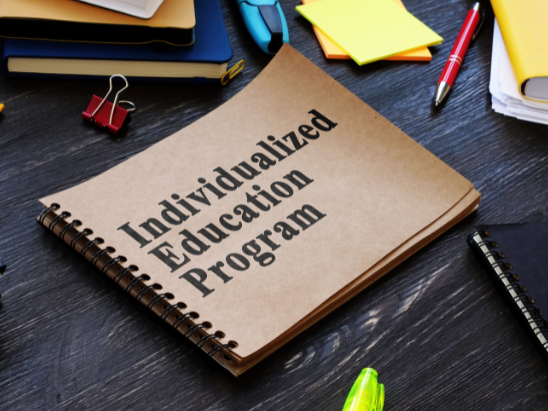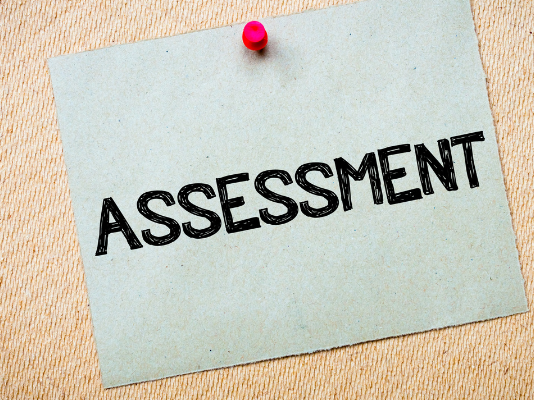504 vs Individual Education Program
Has your child’s doctor told you to request a 504 plan or Individual Education Program (IEP) for your child in school? Or maybe a friend has mentioned that their child has one, and you are wondering if that is the right route for your child? Maybe you are looking for ways to support your struggling learner in the classroom?
But what does 504 or IEP even mean? How can they help your child or teen? I’m here to help break down the differences for you.
Public schools abide by both 504 plans and Individualized Education Program (IEP) supports. I get many questions daily from parents what is the difference? There are many differences between the two plans. Let’s start by looking at the 504 Plan.
What is a 504 Plan?


A 504 plan is a for a student who has a suspected or diagnosed medical disability that is significantly affecting their ability to access learning opportunities in the classroom.
A 504 plan is a legally binding document, and ensures that your child is able to access the educational environments with supports.

A 504 allows for accommodations for students to demonstrate their knowledge in the classroom, or access learning opportunities. This is one of the main differences between an IEP and a 504. The 504 does not provide specialized academic instruction or other related services that an IEP provides.
The 504 accommodations are tailored to your student, and will allow them to access the learning environment. For example, if your child has a diagnosis of Attention Deficit Hyperactivity Disorder (AD/HD), and struggles to complete classwork on time, they may benefit from accommodations such as having extra time to complete work in the classroom.
The 504 team will work with you to set up the best plan for your child to be successful. For some ideas on accommodations for your child, check out my post here.

What is an IEP?
An IEP, short for Individualized Education Plan, is a specially designed learning plan for a student who has a disability.
An IEP is also a legally binding document that outlines what services, accommodations, or supports a student may need.
To qualify for an IEP, a student must have a qualifying disability, and demonstrate a need for specialized services. The disability may impact behavior, academics, and/ or social needs. An IEP is typically more extensive than a 504 plan.

You know your child best. According to the Child Find Law, public schools are obligated to assess students with suspected disabilities.
Are you wondering how to get a 504 plan or IEP? Where does one start?
Both the 504 plan and an IEP require an assessment process.

Schools may have processes and procedures in plan (such as Multi-Tiered Systems of Success or Student Success Teams) to make sure that students are getting the learning supports that they need, and these processes may also lead to a 504 plan or an IEP.
If you suspect that your child needs academic, behavioral, or social help, check in with your child’s teacher first. Set up a meeting with them, and discuss your concerns.

It is helpful to bring a list of your questions and concerns. Feel free to bring a support person with you (ex. your child’s tutor, other parent, grandparent, etc.).
The teacher may propose some interventions to try, or refer your child through the school’s process to access help. If you are not seeing the expected results, submit a written letter to the school principal, school psychologist and teacher. A template is included here.
504 assessment process
If the school team and you decide that a 504 plan is the best decision for your child or teen, you will meet with the 504 team. Feel free to bring any information from outside providers that you work with (ex. physician, neurologist, Occupational Therapist, counselor, etc.). As a team, you will determine what supports your child or teen needs to access the learning environment.
The 504 plan will be reviewed at least annually. If you want to make changes to the 504 plan, contact your school’s 504 plan coordinator and schedule a meeting. It is helpful to request the meeting in writing (ex. via email or via written letter) and keep copies of what you send.
IEP assessment process
If the school team and you decide that an IEP is the best decision for your child or teen, you will receive an assessment plan. The assessment plan outlines what the school team is proposing to assess in.
Review the assessment plan and make sure that it covers all of the areas that you are concerned about. If you do not feel like the assessment plan is complete or you have questions about it, contact the case manager (typically the special education teacher at the school).
Once you sign the assessment plan, in California, the school team has 60 calendar days to complete the assessment. If there are school closures in excess of 10 days or longer (such as winter break), the timeline stops and will resume again when school begins again.
The school team will assess in all suspected areas of disability. The assessment will typically consist of observation of the student, interviews with teacher/ parent/ and student if applicable, direct standardized assessments, and a record review of all applicable school and medical records.
The school team will schedule a meeting at the end of the 60 day assessment period. At the meeting, you will go over the results of the assessment, determine needs, and if the student is eligible for special education services. For more information on the different eligibility categories, see my post here.
As a parent, it may be helpful to have the assessment report in advance to review it. Feel free to request the assessment report in advance of the meeting. The school team will do their best to get you the report in advance.
If your child meets eligibility for special education services, you and the school team will create a plan for your child or teen based on the identified areas of need. The school team will propose goals and services to help support the identified areas of need. You are a critical part of the school team, so feel free to share your insights and thoughts on the goals and plan.
The IEP will be reviewed at least annually with you and the school team. At the annual meeting, you will go over goal progress, and set new goals. Every three years, there will be a re-assessment to determine if your child continues to meet eligibility as a student with a disability.

What if my child does not attend a public school?
The public school of residence would be the school to assess your child for an IEP. In California, private schools are NOT required to abide by 504 plans or IEPs. The public school who completed the assessment may still offer services to your child, but they would likely be reduced from what your child would receive if they attended public schools.
Even though private schools do not need to abide by 504 plans or IEPs, it may still be helpful to share the plans with the private school administrator. The information that has been gathered may be helpful to the staff, and they may be able to use some of the strategies outlined in the reports.
Whatever route you choose for your child or teen, I’m here to support! Feel free to contact me if you need help or advice.